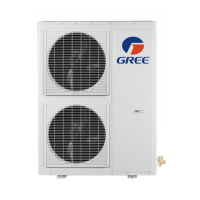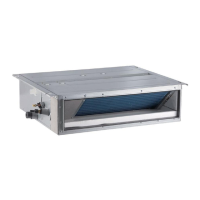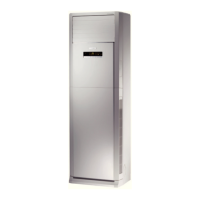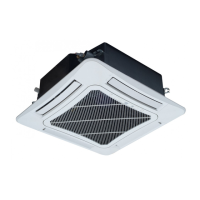82
DC Inverter Multi
VRF Service Manual
5.11.3 Vacuum pumping
The steps are as follows:
a. Expel the nitrogen after leakage detection;
Connect the pressure gauge to Freon nozzle on outdoor liquid valve and gas valve, and connect a vacuum
pump. Then, establish vacuum simultaneously from high pressure side and low pressure side.
Connector on liquid side
Pressure gauge connector valve
Connector on gas side
Vacuum pump
Start the vacuum pump and turn on “LO” and “HI” knobs;
b. Continue for 0.5~1.0 hour after the vacuum level reaches -0.1MPa (gauge pressure -1kgf/cm2). Then,
close the “VH” knob on high pressure end and “VL” knob on low pressure end to stop the vacuum pump.
c. Remove the hose connected to vacuum pump and reconnect it to the refrigerant tank. Expel the air
in the hose. Open the “VL” knob on low pressure end to charge refrigerant to the system piping. When the
pressure reaches 0.0kgf/ cm2, close the “VL” knob on low pressure end.
d. Remove the hose connected to refrigerant tank and reconnect it to vacuum pump. Start the vacuum
pump and open the “VH” knob on high pressure end. Pump for 30 minutes from high pressure end and then
open the “VL” knob to pump from low pressure end, until the vacuum level reaches -0.1MPa (gauge pressure
-1kgf/cm2).
If the vacuum level reaches -0.1MPa (gauge pressure) or lower, the vacuuming process is then ended.
Stop the vacuum pump and place still for 1 hour. Then, check the vacuum level for any change. In case of any
change, it indicates that there is leakage. In this case, proceed to leakage detection and repair.
H:KHQWKHSURFHGXUHVIRUYDFXXPSXPSLQJDUH¿QLVKHGUHIULJHUDQWVKDOOEHFKDUJHG
5.12 Refrigerant Charge
5.12.1 Calculation method for refrigerant charging
5HIULJHUDQWVKDOOEHFKDUJHGDFFRUGLQJWRFDOFXODWHGDPRXQWVSHFL¿HGLQHQJLQHHULQJGUDZLQJV
Method for calculation of added refrigerant volume (based on liquid pipe)
0DVVRIUHIULJHUDQWWREHFKDUJHG OHQJWKRIOLTXLGSLSHîUHIULJHUDQWFKDUJHDPRXQWRIHYHU\PHWHURI
liquid pipe.
Amount of refrigerant charge for every meter of liquid pipe(kg/m)
ĭ ĭ ĭ ĭ ĭ ĭ
0.35 0.25 0.17 0.11 0.054 0.022
Note:
a. Standard pipe length is 15m. If refrigerant piping (L) is shorter than or equal to 15m, no additional
refrigerant is needed If piping is longer than 15m (based on liquid pipe), more refrigerant shall be
added. The above table shows how much refrigerant shall be charged for every one additional meter
of piping.
b. Electronic balance shall be used for refrigerant charge.
c. Thickness of pipe wall shall be 0.5~1.0mm and pressure-bearing capability shall be 3.0MPa.
d. The longer the piping, the more refrigerating capacity and heating capacity shall be weakened.

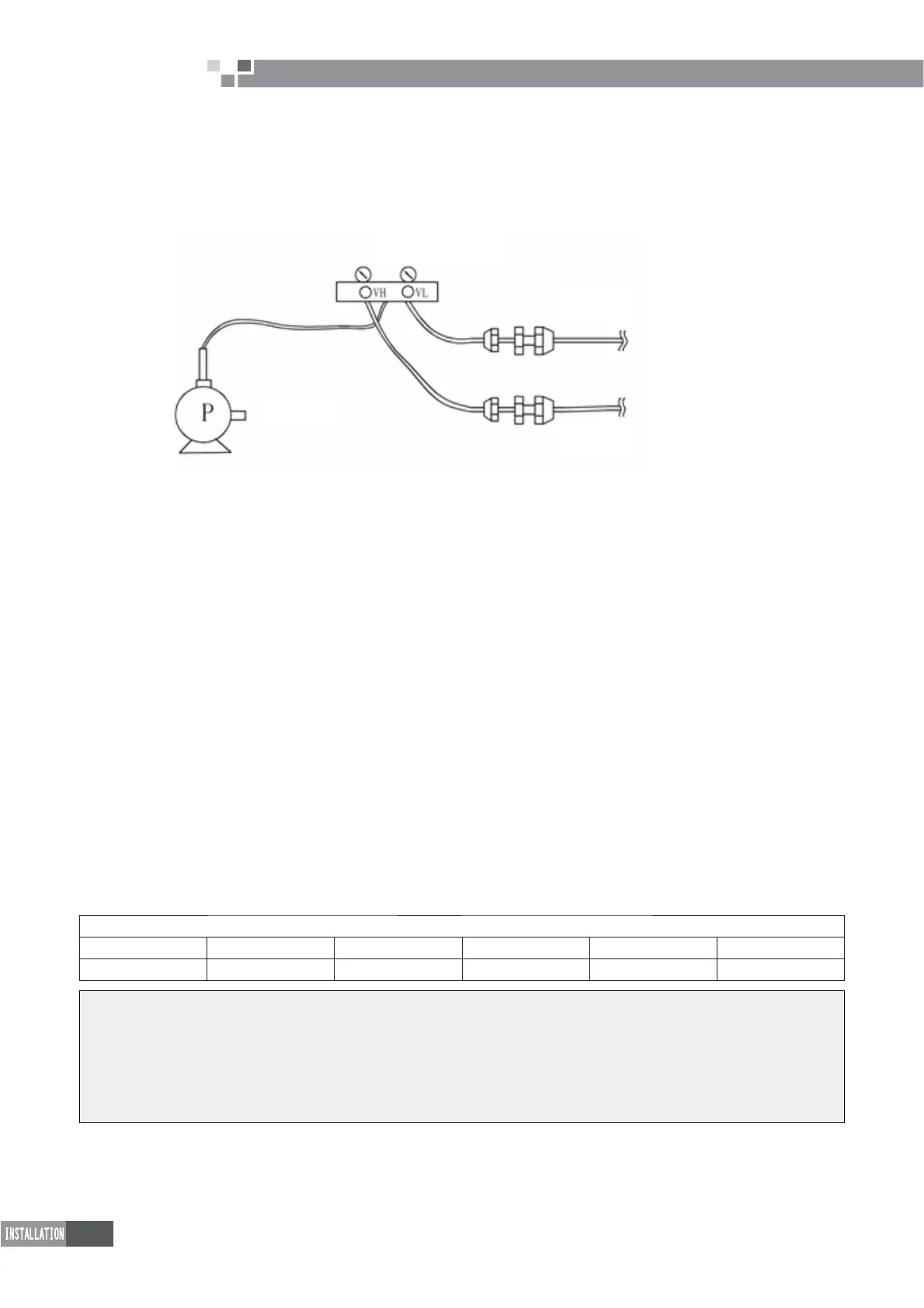